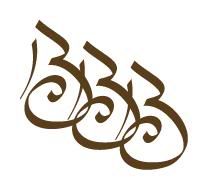I managed to see a variety of births at the birth clinic. For some reason I ended up with the difficult ones full of complications. But there were some wonderful beautiful births as well. Here is a normal birth!
"Made" (pronounced Ma-Day) arrives with her husband at 3am. She slides off the back of their motorcycle where she rode side-saddle for anywhere from 5 to 30 minutes in labor. It is actually not as common for women to arrive in the middle of the night because that would mean driving past graveyards in the pitch-black night with a chance of encountering ghosts. But this is Made's second baby and she knows she is in labor. While she walks along the front porch dealing with a contraction, her husband "Wayan" knocks on the midwives' door.
The midwives share one big room. Two double beds are pushed together for anywhere from 2 - 5 midwives to share during the night, wrapped up in sarongs or a mosquito net. One midwife gets up to answer the knock, pushing her glasses back onto her face. Tonight it is "Ibu Agung" that checks on Made with me trailing behind to help with taking a blood pressure and gathering supplies. (If we hear a mom bellowing from the parking lot, one of us scrambles to make sure everything is laid out in case of a fast birth). Made is taken into a prenatal room where Ibu Agung checks her dilation and asks questions to make sure labor has really begun. 5cm dilated and laboring well, and wanting a water birth.

While the mother labors in her room, I begin to fill the water tub, put down a slip-proof mat on the floor, find extra towels, and make sure all of the supplies are ready: homeopathy, herbs, resus equipment, sterile gloves, yunan bayao, etc. The mother takes a sip out of her large water bottle and hands it to me. I take it to the fridge in the midwives' room and put 3 large squirts of liquid chlorophyll into it. When I get back water tub isn't ready yet so I help the dad help Made through a few contractions. Every 30 minutes or so I listen to the baby's heart and record everything on the chart. Her contractions get stronger and she gets into the tub. I tell the other midwives that Made is progressing quickly and a they get out of bed and wait around.
On my way to the clinic that night, I collected flowers. As I walked out of my house, I pulled a few from the trees as I passed and picked up more off of the street as I went, using the flashlight on my phone so I don't trip over rocks in the road. The flowers are for any births to come that night. I retrieved the flowers from earlier and dropped them into the water tub with Made. She takes a deep breath and smiles at me. I ask, "Bagus?" Good? She nods ands closes her eyes. During one contraction her water breaks and I lean down into the tub with the doppler to check on the baby. He or she is just fine, and I can see Made's labia beginning to open as she begins to push.
I have a baby blanket over my shoulder and the dad has a baby hat in his shirt to keep it warm. My senior midwife breezes in and squeezes my arm. I smile and say, hey you finally woke up! Even after 3000 babies, she can't help but come to births. Sometimes the clinic will call her to come with a difficult birth, and other times, she just wakes up and knows somehow that she should come. Made is so happy that she came as her first baby was also born at the clinic.
We all watch as the baby's head begins to appear and the midwives begin to sing the Gayatri Song. It is the most revered Hindu prayer and the first thing a baby hears. All of the midwives and the father sing... an amazing sound as it echoes through the room. Outside the birthroom it is silent. The mothers with newborns in the postpartum room have heard the labor and listen in anticipation. The family members outside hold their breaths. Made's firstborn, a daughter, is brought in by her mother-in-law to watch. I reach down to slow the baby's head down from tearing through and soon my whole hand is filled with a soft baby's face. I check for a cord and there is none. And the a baby slides out into the water, into my hands, and then is lifted up onto the mother's chest while the room echoes in song. Chills go down my spine!
I lay the blanket over the baby, and a midwife puts the warmed hat onto the baby's head. We wait for a few minutes as the water drains, scooping out bits of blood and membranes, while waiting for the placenta. The mother shifts uncomfortably and I catch the placenta as it slides out. I inspect it quickly for any missing parts, wash it off in the tub and carefully place it in a bowl, without clamping or cutting the cord. I scoop out the flowers, rinse them off, and place on top of the placenta. Made looks down at her baby and lifts a little leg. She sighs a huge sigh of relief.... a boy! Now that she has birthed a boy, she can stop having babies.
As soon as she can, Made gets up and is showered off while one of the midwives takes the baby and placenta to the bed. She dries off with help and lays down where the baby is immediately putting him to her breast. The senior midwife and I check her perineum and discover no tears! Made has already drunk her yunan bayao drink to help prevent hemorrhage and I sprinkle dried yunan bayao over the tender tissues to help them heal. I take a warm wash cloth and wipe her down again, and help her put on underwear with pads. The dad helps me take one of her sarongs and lay it over her, tucking her and baby in together.
By now, the student midwives have finished cleaning the tub and putting things away. I make sure the placenta bowl is close enough to the baby so it doesn't pull on his cord. He is beautiful and the mother is sleeping. I quietly close the door behind me and will check on her off and on until later in the day. I look at my watch and it is 8am. On that day, it is one birth finished and three to go.
Labels: apprentice, birthstory, Indonesia




